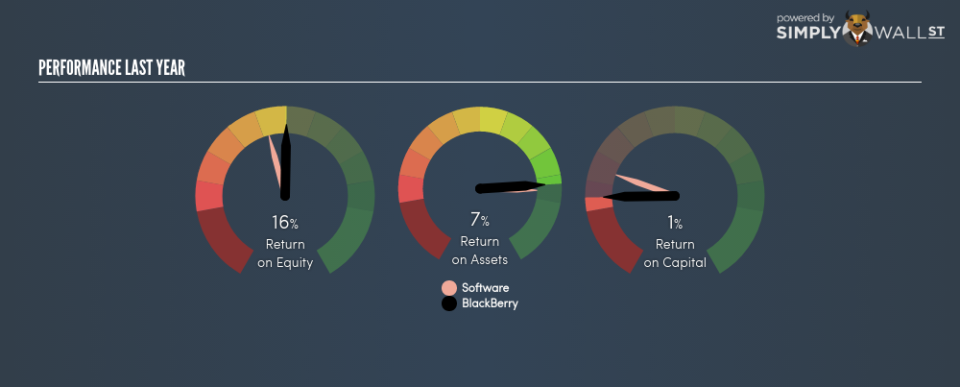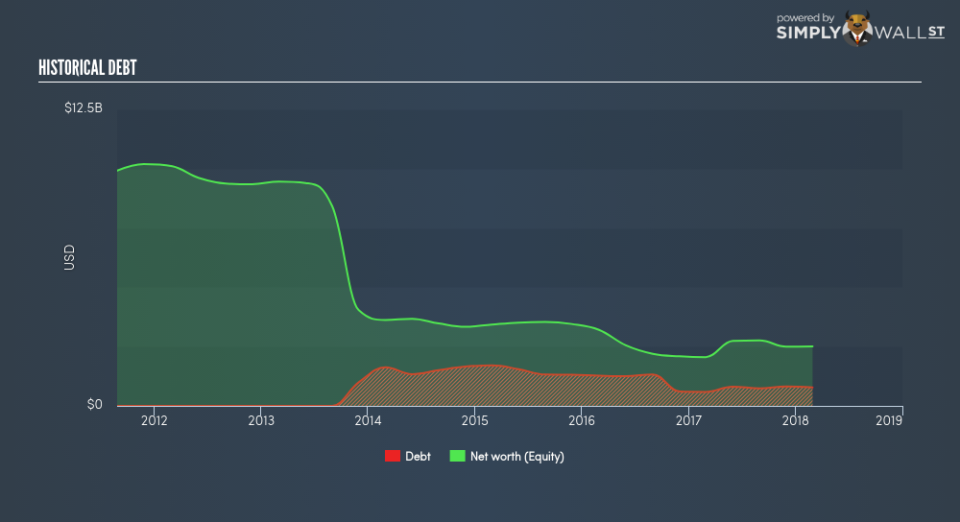Should You Expect BlackBerry Limited (TSE:BB) To Continue Delivering An ROE Of 16.17%?

I am writing today to help inform people who are new to the stock market and want to begin learning the link between BlackBerry Limited (TSE:BB)’s return fundamentals and stock market performance.
With an ROE of 16.17%, BlackBerry Limited (TSE:BB) outpaced its own industry which delivered a less exciting 13.61% over the past year. While the impressive ratio tells us that BB has made significant profits from little equity capital, ROE doesn’t tell us if BB has borrowed debt to make this happen. Today, we’ll take a closer look at some factors like financial leverage to see how sustainable BB’s ROE is. Check out our latest analysis for BlackBerry
What you must know about ROE
Return on Equity (ROE) is a measure of BlackBerry’s profit relative to its shareholders’ equity. An ROE of 16.17% implies CA$0.16 returned on every CA$1 invested. While a higher ROE is preferred in most cases, there are several other factors we should consider before drawing any conclusions.
Return on Equity = Net Profit ÷ Shareholders Equity
Returns are usually compared to costs to measure the efficiency of capital. BlackBerry’s cost of equity is 8.47%. This means BlackBerry returns enough to cover its own cost of equity, with a buffer of 7.70%. This sustainable practice implies that the company pays less for its capital than what it generates in return. ROE can be broken down into three different ratios: net profit margin, asset turnover, and financial leverage. This is called the Dupont Formula:
Dupont Formula
ROE = profit margin × asset turnover × financial leverage
ROE = (annual net profit ÷ sales) × (sales ÷ assets) × (assets ÷ shareholders’ equity)
ROE = annual net profit ÷ shareholders’ equity
Basically, profit margin measures how much of revenue trickles down into earnings which illustrates how efficient the business is with its cost management. Asset turnover shows how much revenue BlackBerry can generate with its current asset base. The most interesting ratio, and reflective of sustainability of its ROE, is financial leverage. Since ROE can be artificially increased through excessive borrowing, we should check BlackBerry’s historic debt-to-equity ratio. At 31.22%, BlackBerry’s debt-to-equity ratio appears low and indicates the above-average ROE is generated from its capacity to increase profit without a large debt burden.
Next Steps:
ROE is a simple yet informative ratio, illustrating the various components that each measure the quality of the overall stock. BlackBerry exhibits a strong ROE against its peers, as well as sufficient returns to cover its cost of equity. ROE is not likely to be inflated by excessive debt funding, giving shareholders more conviction in the sustainability of high returns. Although ROE can be a useful metric, it is only a small part of diligent research.
For BlackBerry, I’ve put together three essential factors you should further research:
Financial Health: Does it have a healthy balance sheet? Take a look at our free balance sheet analysis with six simple checks on key factors like leverage and risk.
Valuation: What is BlackBerry worth today? Is the stock undervalued, even when its growth outlook is factored into its intrinsic value? The intrinsic value infographic in our free research report helps visualize whether BlackBerry is currently mispriced by the market.
Other High-Growth Alternatives : Are there other high-growth stocks you could be holding instead of BlackBerry? Explore our interactive list of stocks with large growth potential to get an idea of what else is out there you may be missing!
To help readers see pass the short term volatility of the financial market, we aim to bring you a long-term focused research analysis purely driven by fundamental data. Note that our analysis does not factor in the latest price sensitive company announcements.
The author is an independent contributor and at the time of publication had no position in the stocks mentioned.

 Yahoo Finance
Yahoo Finance 

